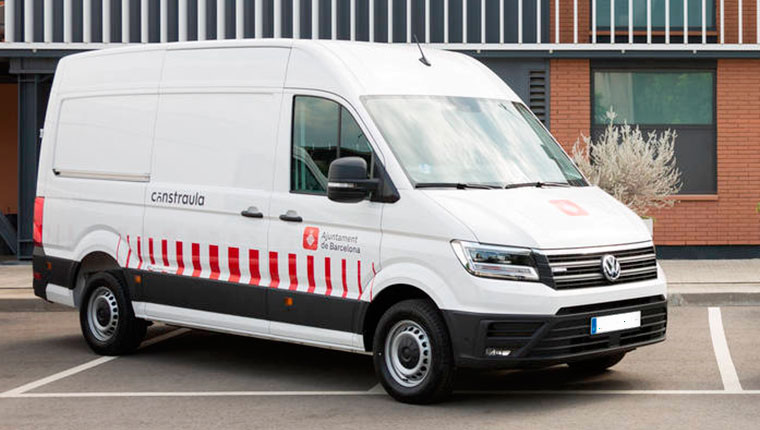Compulsory use of masks for travelling
These regulations will apply not just to all public-transport users (train, metro, bus, tram) but also to everyone using public transport travelling in vehicles with seating for up to nine people, including the driver, such as taxis, and to goods vehicles and individual vehicles. As for stations, interchanges and stops, traffic measures will be established to avoid crowds.
As of today, 4 May, it will be compulsory for all passengers travelling road, railway, air or sea to wear masks that cover their nose and mouth (passengers on ships will not need to wear masks when they are in their own cabin.).
These regulations will apply to not just all public-transport users (train, metro, bus, tram) but also to every one using public transport with seating for up to nine people, including the driver, such as taxis. Goods vehicles and individual vehicles too.
Occasional public and supplementary private transport
Public transport providing seating for up to nine people, including the driver, such as taxis, may be used with up to two people in each additional row of seats besides the driver’s, ensuring the maximum distance possible between occupants.
In regular public, occasional and supplementary private transport by bus, as well as by train, where all occupants are seated, companies will adopt the necessary measures for ensuring maximum possible separation between passengers, so that no more than half of the available seats may be occupied. In any case, the front row immediately behind the driver’s seat will always be kept empty in buses.
As for collective public-passenger transport in urban and supra-municipal areas, where there are platforms for passengers to stand on, efforts will be made for maximum distances to be maintained between passengers, under a two-passengers-per-square-metre rule for allocated standing areas.
The competent authorities may establish the necessary opening times for shops for the purposes of reducing the intensity of their respective areas’ rush-hour demand for public transport.
Orderly movement at stations and stops
As for access points, stations, interchanges and the like, where there are incoming and outgoing flows of users, the various operators will establish and implement organisational measures to ensure orderly movement and prevent crowds. There will also be extra announcements with regulations implemented in potentially crowded areas (train stations, metro and bus stops, airports, etc.,) giving reminders of social distancing and hygiene measures.
Goods transport and private transport
People working in transport services who have direct contact with passengers must wear a mask and have access to aqueous alcohol solutions for frequent hand sterilisation.
Meanwhile, up to two passengers per row of seats may travel on individual and complementary private vehicles with seating for up to nine people, including the driver, provided everyone wears a mask and keeps as far away as possible from one another.
As for vehicles whose technical features limits them to having only have one row of seats, such as the driver cabins in heavy-goods vehicles (vans, lorries etc.,), a maximum of two people may travel in them, provided they wear masks that cover their air passages and they keep as far away as possible from one another. Should it not be possible for this condition to be complied with, only the driver will be able to travel in such vehicles.






Tags associated with the news item
Related news
-

More passengers on public transport and more use of bicycles
11/05/2020 08:22 h



